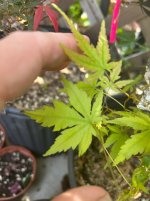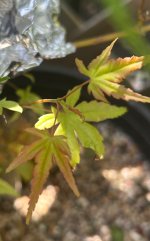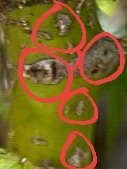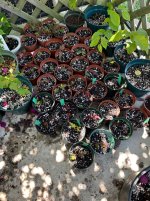Jetson1950
Seedling
- Messages
- 9
- Reaction score
- 12
I got this maple from a friend. I’ve had it for about 2.5 years and I think it’s about 4 years old. It doesn’t appear to be grafted, so I assume cutting or seed. The leaves are quite small, so I’m putting it in training next year. I’m also air layering the top off. It’s got a pretty nasty trunk knob about half way up I need to remove. The four pictures show mature leaf, non hardened mature leaf, new leafs and trunk. The new leafs have a pinkish red-orange color. I’m sort of thinking Arakawa because the trunk is starting to look that way as it ages.












